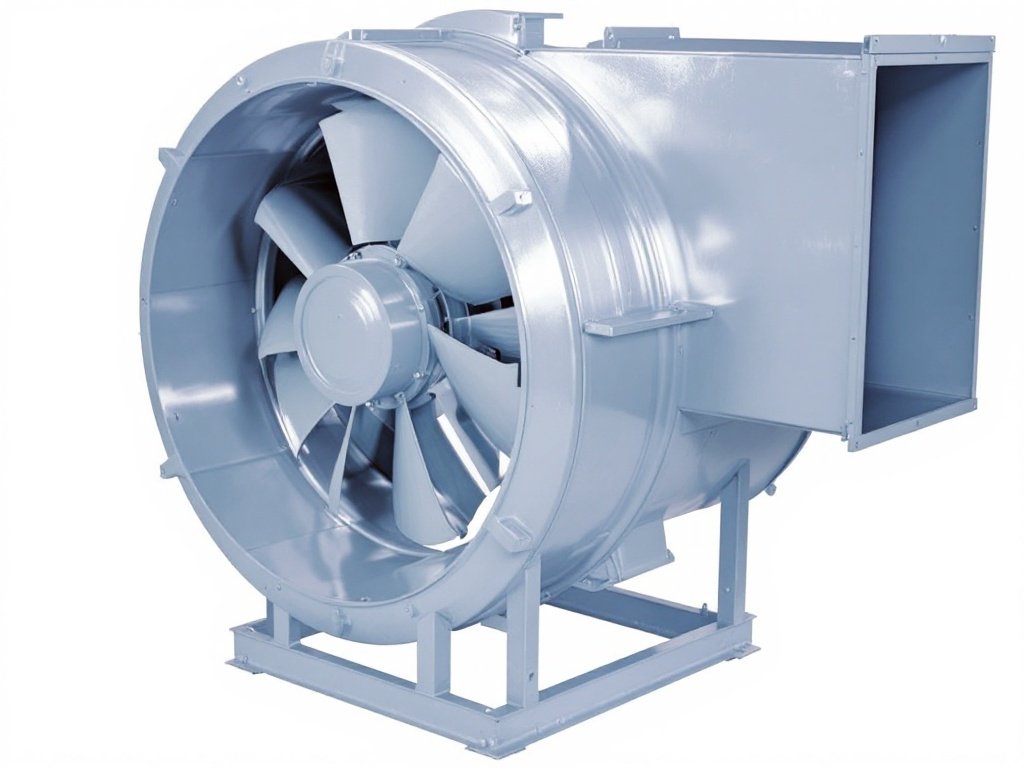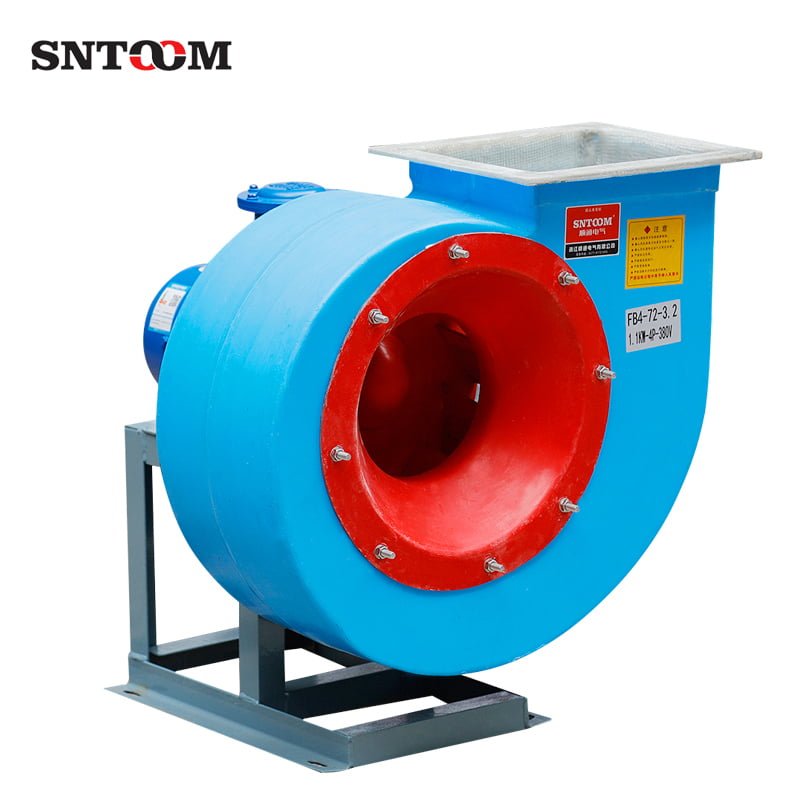How to Read Centrifugal Fan Curves
Learn the basics of interpreting centrifugal fan performance curves to properly select and apply fans in HVAC systems.
Read More
In industrial settings, Centrifugal Fan are indispensable for various applications, from ventilation and cooling to material handling and drying. Among the diverse types of fans available, centrifugal fans and plug fans are two commonly used options that cater to different requirements.
This article delves into the key differences between centrifugal fans and plug fans, exploring aspects such as airflow direction, design, applications, efficiency, and installation. By understanding these distinctions, professionals can make informed decisions when selecting the most suitable fan for their specific industrial needs.
A centrifugal fan is a mechanical device that utilizes rotating impellers to move air or gases. The impeller is composed of a central hub with multiple blades attached to it. As the impeller rotates, it draws air into the center of the fan and propels it radially outward due to centrifugal force.
The housing of a centrifugal fan is typically scroll-shaped, which helps guide the airflow from the impeller to the outlet. This design allows for efficient static pressure generation, making centrifugal fans suitable for applications that require high pressure, such as dust collection systems, air conditioning units, and industrial ventilation.
A plug fan, also known as a plenum fan, is a type of centrifugal fan that consists of a wheel with multiple blades mounted directly on the motor shaft. The term “plug” refers to the fan’s ability to be easily plugged into a system without the need for a scroll housing.
Plug fans are designed to operate within a pressurized plenum or chamber, where they draw air from one side and discharge it from the other. The airflow direction is typically parallel to the motor shaft, allowing for more compact and streamlined installations compared to traditional centrifugal fans.
One of the primary advantages of plug fans is their modular design, which enables them to be easily stacked or arranged in arrays to meet specific airflow and pressure requirements. This modularity makes plug fans highly adaptable to various applications, such as air handling units, data center cooling, and clean room ventilation.
Plug fans also offer high efficiency due to their direct-drive design, which minimizes energy losses associated with belt-driven systems. Additionally, their compact size and reduced noise levels make them suitable for space-constrained installations and environments where low noise is a priority.


While both centrifugal fans and plug fans move air, they have several distinct differences in their design, operation, and applications.
One fundamental difference between centrifugal fans and plug fans lies in the direction of airflow. Centrifugal fans draw air in parallel to the shaft axis and discharge it perpendicularly, using centrifugal force generated by the rotating impeller. In contrast, plug fans move air axially, parallel to the shaft, without changing the airflow direction.
Centrifugal fans feature a rotating impeller inside a scroll-shaped housing. The impeller consists of blades that can be forward-curved, backward-curved, or radial, depending on the application requirements. The scroll housing guides the air from the impeller and directs it to the outlet.
Plug fans, also known as plenum fans, have a simpler design consisting of a wheel with airfoil-shaped blades mounted directly on the motor shaft. The blades are designed to optimize airflow and minimize turbulence. Plug fans do not require a scroll housing, as they are typically mounted inside a duct or plenum.
Centrifugal fans are versatile and used in a wide range of applications, including HVAC systems, industrial processes, and pollution control. They are well-suited for systems with high static pressure requirements, such as those involving ductwork, filters, or other resistances. Centrifugal fans can handle various airflow volumes and pressures, making them adaptable to different environments.
Plug fans are commonly used in applications that require high airflow volumes with relatively low static pressure, such as air handling units, cooling towers, and ventilation systems. Their compact design and ability to mount directly in ducts make them ideal for space-constrained installations. Plug fans are also frequently used in data centers and clean rooms, where efficient air circulation is critical.
The efficiency of centrifugal fans and plug fans depends on several factors, including impeller design, motor performance, and system resistance. In general, plug fans tend to have higher mechanical efficiency due to their simpler design and lower friction losses. The airfoil-shaped blades of plug fans help minimize turbulence and improve airflow efficiency.
Centrifugal fans can achieve high efficiencies with proper impeller selection and system design. Forward-curved impellers are suitable for low to medium pressure applications, while backward-curved and airfoil impellers offer higher efficiencies in medium to high pressure systems.
The installation requirements for centrifugal fans and plug fans differ based on their design and application. Centrifugal fans are typically installed on a base or platform and connected to ductwork through flexible connectors to minimize vibration transmission. The scroll housing must be properly aligned with the ductwork to ensure efficient airflow and prevent leakage.
Plug fans, being more compact, are easier to install and require less space. They are designed to be mounted directly in ducts or plenums, eliminating the need for additional support structures. The motor and impeller assembly can be easily accessed for maintenance or replacement.